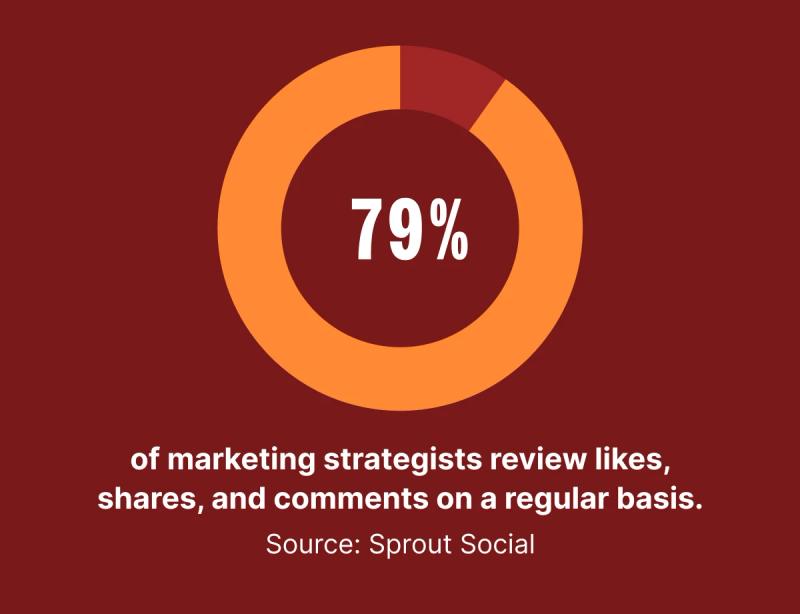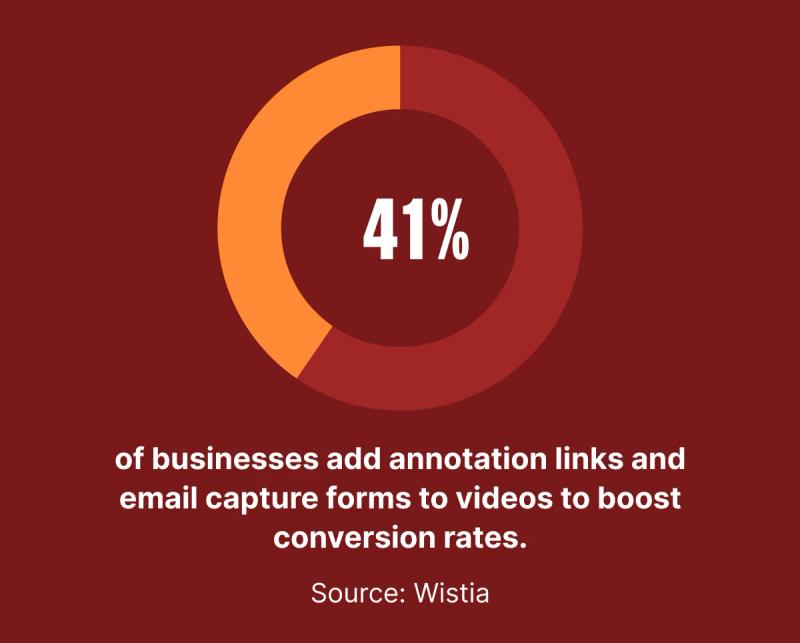7 Strategies to Increase B2B Social Media Engagement (2024)
Table of Contents
Maximize Your Marketing ROI
Join 10,000 other marketers already getting the best tips on running engaging events that boost pipeline and create raving fans.
B2B prospects aren’t picking up the phone for cold calls. And they definitely aren’t replying to vaguely “personalized” emails. In the digital age, their eyes are fixed on social media.
According to a report by Wpromote and Ascend2, social media is now considered the most effective B2B channel for driving revenue. But with the rise of dark social and zero click content, translating social media engagement into ROI isn’t easy.
In this guide, we’ll share strategies to help you create social media content that not only drives engagement, but also translates into leads.

Social media engagement in B2B marketing
For modern B2B marketers, social media is more than a place to share your latest blogs or press releases. It’s a powerful platform that enables brands to cultivate relationships, establish thought leadership, generate leads, and increase customer loyalty.
According to data from the Content Marketing Institute, social media platforms are the #1 tool B2B marketers use to distribute content, with LinkedIn (96%), Facebook (76%) and Twitter (70%) as their the top three organic channels.
And as you might expect, the vast majority (93%) say LinkedIn is their most effective social media channel.
7 strategies to improve B2B social media engagement
By actively engaging with your audience on social, you can drive valuable interactions that make a tangible impact on pipeline. And in a self-serve B2B buying climate, that’s no small thing.
But as with every other aspect of your marketing strategy, you need a plan to get it right. These seven best practices will help you get more engagement with every post.
1. Know your metrics
According to research, tech and software brands get 60 average inbound engagements on content per day. Your engagement rate can be calculated by summing up likes, comments and shares, and dividing by your total number of followers. But a forward-looking social media engagement strategy also encompasses many other factors.
Here are some of the top social media metrics to help measure your performance:
- Follower growth
- Follower growth rate
- Audience size
- Referral traffic
- Social media mentions
- Click-through rates (CTRs)
- Reply time
- Total response volume
- Customer satisfaction score (CSAT)
- Comments
- Impressions
- Reach
- Video views
Each of your social media accounts will provide built-in dashboards to help you track these and other metrics. But even with done-for-you social media analytics, working social media engagement into your attribution models isn’t always straightforward.
To start, choose your ‘north star’ metric for daily tracking. According to research from Sprout Social, 79% of marketing strategists review likes, shares, and comments on a regular basis to understand how well their content is performing.
From there, you can drill down deeper on a quarterly basis to compare metrics on specific campaigns against your broader marketing goals.

2. Set your posting and engagement targets
People trust consistency, but social media management is still an afterthought in many B2B marketing teams.
By setting specific, measurable goals for both your engagement metrics and posting frequency, you can keep your social media strategy focused and on-track. You’ll also have a much easier time tracking your performance and knowing where to make adjustments along the way.
But we’ll be honest, it’s a team effort. Plan ahead to create a monthly content calendar and collaborate with your product, sales, custom support, and HR teams to make sure everyone has a hand in creating and sharing content, rather than scrambling last minute to find something to post.
3. Know your audience
According to research from Forrester, 63% of sales leaders believe digital buying behaviors will have a significant impact on their org, yet only 37% say digitizing the buyer’s journey is a top priority.
Understanding the demographics, interests, and behaviors of your audience is essential for creating the kind of content that generates both brand awareness and leads.
Here are a few key questions to think about:
- What social media platforms are most commonly used by our target audience?
- What type of content format (e.g., videos, gifs, infographics, audiograms) resonates best?
- When is the best time to post content to reach our audience effectively?
- How do our target audience members prefer to interact with social media content?
- Are there any specific hashtags or keywords that our audience frequently engages with?
- What pain points, challenges, and interests can we address through social media content?
- How can we encourage our audience to take action (e.g., visiting our website, downloading a resource) through our social media content?
- Are there any industry influencers or thought leaders that our audience follows on social media?
- How can we leverage those relationships for more engagement?
To create, capture and convert demand on social media, you’ve first got to go back to basics. Take time to understand what your audience wants from their relationship with social media so you can be the one to give it to them.

4. Tailor posts to the platform
Each social media platform has its own unique features and audience behaviors. Rather than trying to be everywhere all at once, make sure your presence on each platform is fully optimized for a high-quality, high-impact experience.
To adapt your content to each channel, focus on these three areas:
- Formats: Which content formats perform best on this channel?
- Tones: What type of language and communication style is commonly used?
- Styles: Are there any trending features or tools that can be leveraged to enhance our content style (e.g., live streaming, ephemeral content, interactive polls)?
Once you’ve identified your top formats, tone and style, take time to operationalize the specific character limits, aspect ratios, and other technical constraints on each platform as part of your day-to-day content creation process.

5. Time your posts well
By timing your posts for when your audience is most active, you instantly increase your potential for higher engagement.
According to Sprout Social's analysis of nearly 2 billion engagements across Twitter, Facebook, LinkedIn, Instagram, Pinterest and TikTok, the best times to post are:
- Mondays from 11 a.m. to noon
- Tuesdays from 10 a.m. to 2 p.m. and 3 to 4 p.m.
- Wednesdays from 9 a.m. to 3 p.m.
- Thursdays from 9 a.m. to 2 p.m.
- Fridays from 10 to 11 a.m.
Their research also found that the best days to post on social media are Tuesdays, Wednesdays and Thursdays and that Sundays are (unsurprisingly), the worst days to post.
Keep in mind, peak activity times can vary based on your target audience and preferred platform. Make sure you’ve taken the time to analyze your market and ensure that you’re scheduling your posts strategically.
6. Content repurposing
Getting more with less is the name of the game in B2B marketing. With the right content repurposing strategy, you can maximize your return on every post without cutting corners on quality.
Many brands are embracing a video-first content repurposing strategy to do exactly that. Here are a few tips to help you get more social content out of your existing videos.
- Use video as your default source content: Long-form video content like webinars, podcasts, and virtual events make excellent source material for social media posts that are relevant, engaging and non-derivative—even when repurposed.
- Pinpoint top moments of engagement: Use your live engagement analytics to understand which parts should be repurposed into shorter videos for social.
- Use AI to create clips and snippets faster: With the right tools you can maintain velocity, without sacrificing quality.
Even on traditionally text-oriented platforms like LinkedIn, videos play a big role. And with an efficient set of tools and processes, you don’t need to hire a team of professional videographers or take a full day out of your week to make it happen.
7. Offer audience value
With brands posting an average of 10 social posts per day, your audience is inundated with information. Providing real value with each and every post is the only way to break through.
Here are some ideas to help position your brand as one worth following:
- Share original research and data
- Promote relevant giveaways
- Offer exclusive access to events, webinars, or product launches
- Reward engagement with insider information and behind-the-scenes content
- Share user-generated content from happy customers
- Keep your audience informed and up-to-date on the latest industry trends
- Share downloadable resources such as whitepapers, ebooks, guides
- Partner with the top influencers and tastemakers in your industry
Be sure to mix up your content formats with a variety of audio, visual and text content so your followers have the option to read, watch or listen.
You can also boost your engagement levels by adding clear calls-to-action (CTAs) that lead to landing pages or lead gen forms. Once your strategy is up and running, you can use your social media engagement metrics to help nurture your leads via targeted content and personalized messaging.

Examples of engaging B2B social media marketing in action
Now for some real-world examples. These B2B marketing teams achieved high engagement levels on their social media content, without spending hours of time they don’t have.
Above-average engagement on LinkedIn
With a little help from AI, Kristen Nuñez, Global Event Manager at electronics industry media and SaaS group AspenCore increased their engagement on LinkedIn. One video accounted for 16% of their total average campaign clicks.
Not only that, by using AI to repurpose their recorded event videos, they were able to condense their video editing tech stack from four tools to one while growing their content volume and cadence.
3 snippets in 30 seconds
Cloud-based quality software management company Qualio recently started using Content Lab to repurpose video content for their socials.
At the beginning, Senior Content Marketing Manager, Alex Pavlović, was skeptical. But after using Content Lab to create 3-4 snippets in 30 seconds, he’s now a believer.
“In a lot of companies, AI is often oversold and overblown. The lightbulb moment with Content Lab came when, within 30 seconds, it pulled out 3-4 really great snippets,” he says. “It’s made it easier for us to operate at scale in terms of post-event content.”
Boost your social media engagement with Goldcast
Every year, more people are tuning into social for news, opinions, and product recommendations—including your B2B prospects.
By using your event content to fuel engagement across social platforms, you can capture their attention and start building genuine relationships that lead to real revenue. The right platform makes it easy.
Content Lab repurposes your event content into social media posts that are impactful by design. In one central platform, you can create AI-generated clips from any video, draft social posts with text and video using AI, create audiograms from podcasts or video, and instantly format your content for specific social media platforms.
When combined with Goldcast’s powerful engagement tools and deep attendee-level data, it’s easy to pinpoint the moments most likely to resonate on social and drive engagement forward.
Learn how the right event platform can turn your event video into social media posts that move the needle on audience engagement. Request a trial of Content Lab or book your free demo of Goldcast today.
Transform Your Video Marketing with AI
Stay In Touch
Platform
Resources
© 2025 Copyright Goldcast, Inc. All rights reserved.



 Upcoming Events
Upcoming Events Event Series
Event Series On-Demand Events
On-Demand Events

